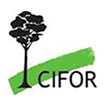Meena Menon, Mumbai, India – The Hindu, www.hinduonnet.com
Reducing emissions from deforestation and forest degradation or REDD plus is becoming the new mantra for sustainable development. Geared to achieve broader human development goals, the programme’s intent is manyfold, according to Antonio G M La Vina, lead negotiator for the Philippines and Dean, Ateneo School of Government, Manila University.REDD plus now encompasses human rights and broader governance objectives and policy reforms, and this has only strengthened it from the initial aim of being a climate mitigation strategy. To make this attractive for developing countries, REDD plus has not only development objectives but governance reforms that are important so that the mechanism is efficient. La Vina said the evolution of the new text at COP 16 illustrates a balancing of development, human rights, and broader environmental objectives and governance, apart from climate change.
From being a purely market driven mechanism, REDD plus has integrated development strategies. It is the only negotiated text so far and there have been real discussions from Barcelona to Copenhagen. Of all the issues, this seems closer to a conclusion at Cancun. Mexico too seems keen on REDD plus and Elias Freig-Delgado, Minister for finance and climate change was clear that REDD plus should include a carbon price, and apart from the environment and social benefits it should attract significant levels of investment from abroad. REDD plus, he feels, is sending the right signal with its mix of social obligations and financial benefits for the investors. Yemi Katerere, head of the UN-REDD programme secretariat, said REDD was operating in 29 partner countries, of which 12 were receiving financial support. The current net contribution for REDD is 92 million US dollars.
Markets will enter in the scheme of things, as without them it is hard to catalyse private investment, said Leslie Durschinger of Terra Global Capital. It would require $17 to 33 billion a year to reduce deforestation emission by 50 percent by 2030 and there will be a funding gap, she estimated. At present, the investment size is small but is poised for growth on the supply side, but standards are important and the Voluntary Investment Standard is a reality now. The private sector needs a good robust investment environment, and the state of California is the first to include REDD plus as an offset mechanism, making it the first REDD-compliant market.
The session was clear that a global treaty on REDD plus would make it more effective. There was an uncritical acceptance that REDD plus was effective to provide sustainable development to forest communities and it would help to strengthen it as a market mechanism to attract funding. There was no representation from the forest communities who were the actual people affected by deforestation to give an alternative viewpoint.
We want you to share Forests News content, which is licensed under Creative Commons Attribution-NonCommercial-ShareAlike 4.0 International (CC BY-NC-SA 4.0). This means you are free to redistribute our material for non-commercial purposes. All we ask is that you give Forests News appropriate credit and link to the original Forests News content, indicate if changes were made, and distribute your contributions under the same Creative Commons license. You must notify Forests News if you repost, reprint or reuse our materials by contacting forestsnews@cifor-icraf.org.





